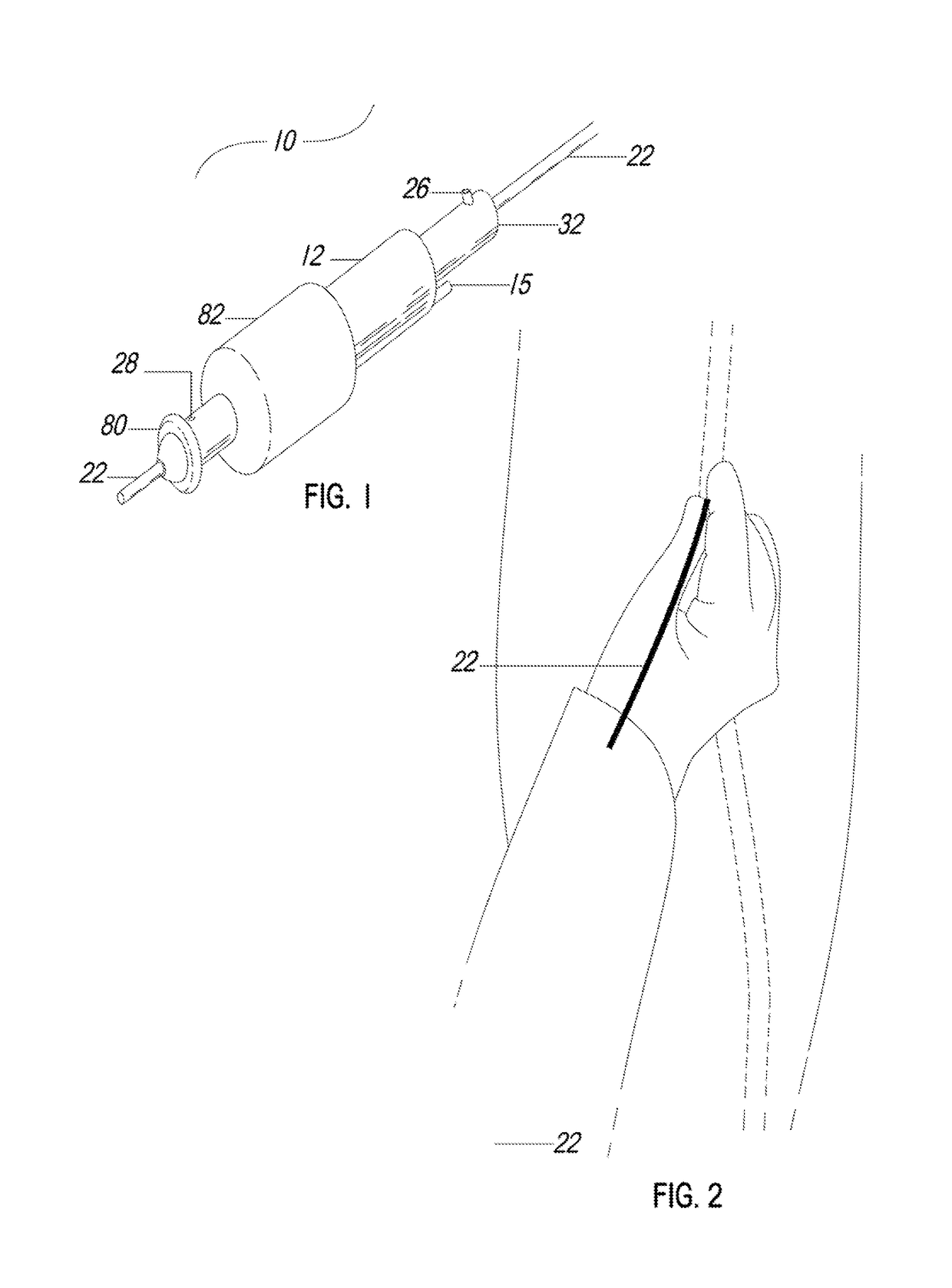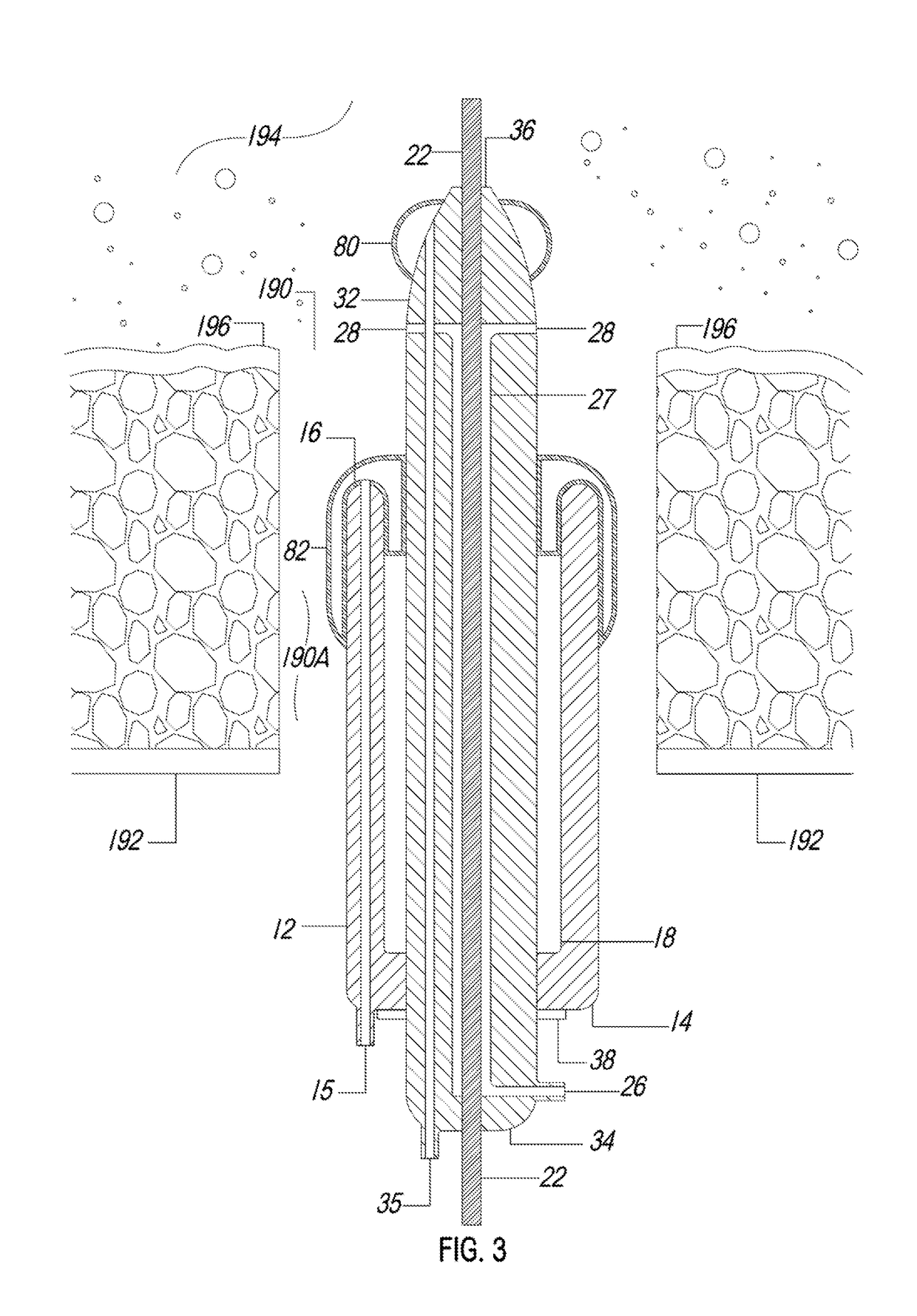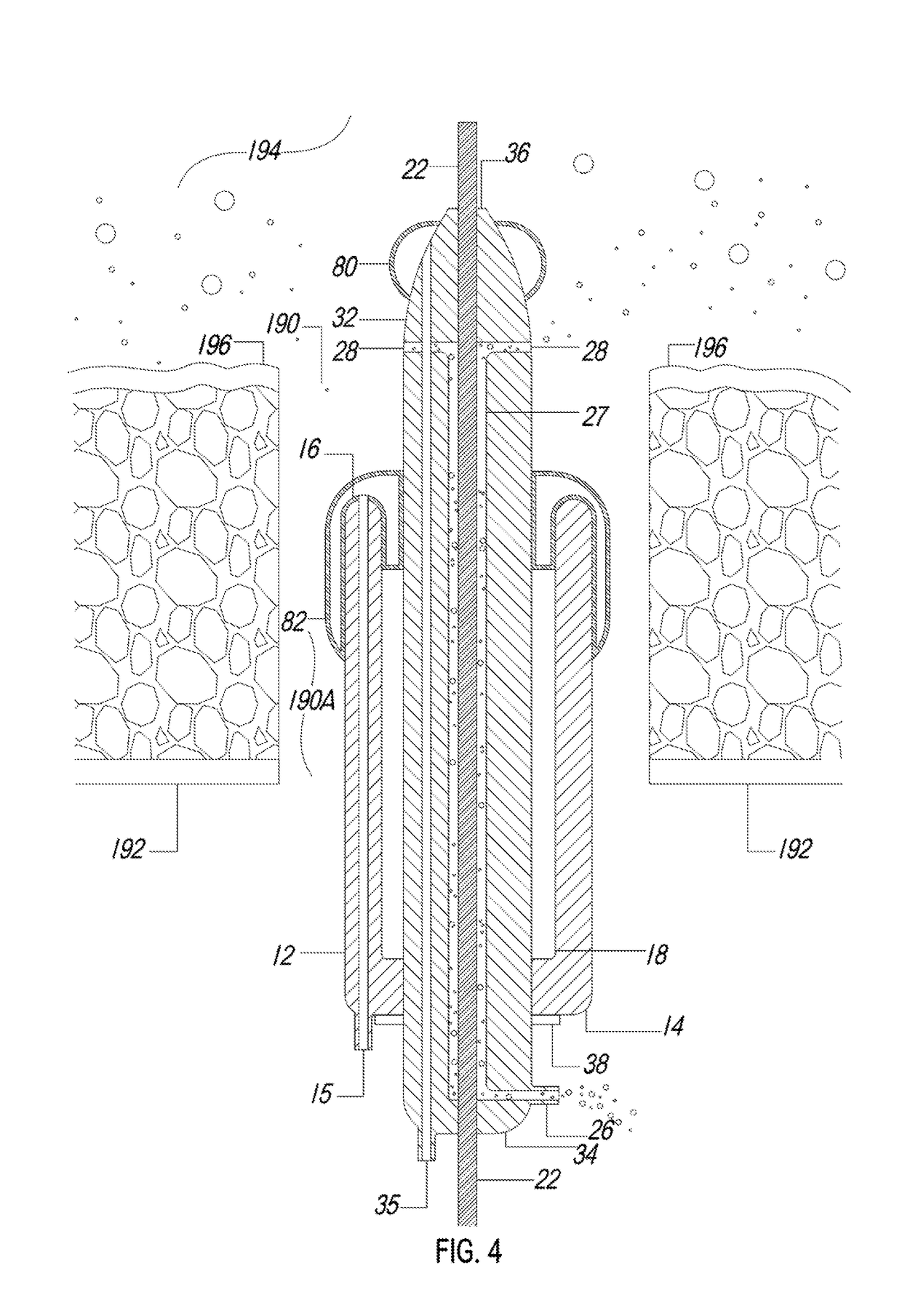Balloon Closure Device
a balloon closure and puncture technology, applied in the field of system and method of sealing punctures, can solve the problems of time-consuming and expensive procedures, requiring as much as an hour of medical professionals' time, uncomfortable for patients, etc., and achieve the effect of effectively occluding the puncture, preventing the dislodgment of the balloon closure device, and puncture tra
- Summary
- Abstract
- Description
- Claims
- Application Information
AI Technical Summary
Benefits of technology
Problems solved by technology
Method used
Image
Examples
Embodiment Construction
[0045]Referring now in greater detail to the various figures of the drawings wherein like reference characters refer to like parts. Turning to the drawings, FIGS. 1-12, show a preferred embodiment of the system, referred to as the balloon closure device 10 for sealing a puncture extending through tissue and / or communicating with a body lumen. The puncture 190 includes not only the opening in the wall of the vessel but also the puncture tract 190A, i.e., the passageway in the tissue located between the vessel and the skin of the being formed when the vessel is punctured.
[0046]The balloon closure device 10 has particular utility when used in connection with intravascular procedures, such as angiographic dye injection, cardiac catheterization, balloon angioplasty and other types of recanalizing of atherosclerotic arteries, etc. since the balloon closure device 10 is designed to cause immediate hemostasis of the blood vessel, e.g., arterial, puncture. However, it is to be understood tha...
PUM
 Login to View More
Login to View More Abstract
Description
Claims
Application Information
 Login to View More
Login to View More - R&D
- Intellectual Property
- Life Sciences
- Materials
- Tech Scout
- Unparalleled Data Quality
- Higher Quality Content
- 60% Fewer Hallucinations
Browse by: Latest US Patents, China's latest patents, Technical Efficacy Thesaurus, Application Domain, Technology Topic, Popular Technical Reports.
© 2025 PatSnap. All rights reserved.Legal|Privacy policy|Modern Slavery Act Transparency Statement|Sitemap|About US| Contact US: help@patsnap.com



